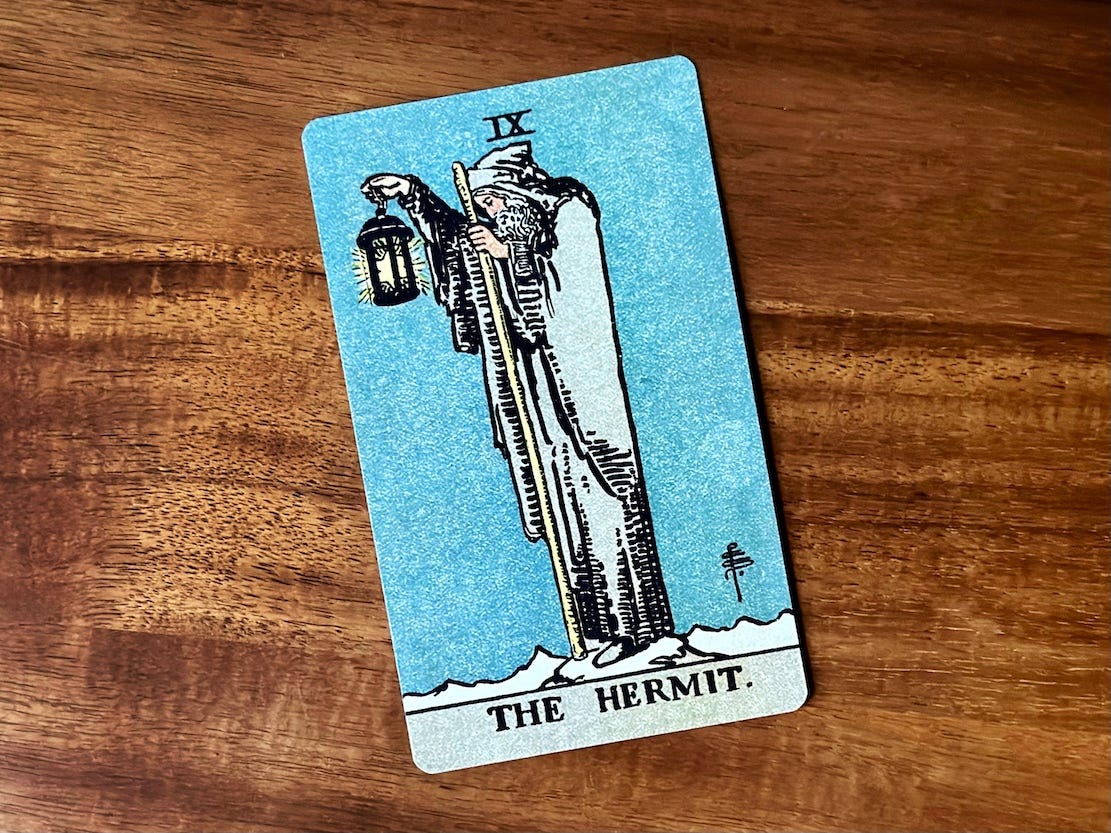“You know what you should write about?” my friend said. “Rejection.”
This friend recently applied for a job and didn’t get it — an extremely common occurrence, particularly in her line of work. Still, she’d been loath to share it with anyone.
I get it. Despite the part where I regularly string words together on the internet, I don’t particularly relish putting myself out there, especially when it means inviting criticism or potentially letting people down. (And when it doesn’t go my way, I tend to keep that to myself.)
Indeed, I’ve written about rejection, fourteen months and fewer readers ago. I told the story of an early rejection that shattered my belief in myself:
Every fall, our high school hung a huge map on the wall near the front office. Whenever a member of the senior class was admitted to a college, a little construction paper flag bearing their name and future school, appeared. Anyone who entered the building couldn’t help but see it — as well as gather round, point, and gossip.
As the weeks rolled by, the map filled with my classmates’ pennants, dozens of tiny flags bursting forth like a field of menacing triangular wildflowers. Whenever I walked by, I’d avert my eyes and hold my breath, hoping my own good news might be just around the corner. As we neared the end of the school year, I was the last member of the graduating class without a single flag.
Late one night, as I was considering how I might reprise the topic, the answer found me in the form of this New York Times article. It tells the story of Downtown Magnets High School in Los Angeles, where college counselor Linda McGee hosts an annual “rejection party.” Each student announces the name of the school that refused them before inserting the offending letter into a paper shredder. There is ice cream for all and a Barnes & Noble gift card for the student with the most rejections.
As I read the piece, I became flooded with emotions. First and foremost, thank goodness for empathetic educators. What I would’ve given for an event like this one! How cathartic would it have been to share that experience with others? And how powerful might it have felt to hear a respected person reassure me that my rejections did not define me…and that perhaps I’d be better off with the alternative?
The piece goes on to document other schools and programs with practices and traditions of their own, all meant to normalize rejection. What struck me as so powerful about these displays wasn’t just the ceremony, the reclamation, the air of celebration, but most importantly, the togetherness. I’ve always seen rejection as a lonely experience — me and my shame, feeling sorry for ourselves. But perhaps it doesn’t need to be that way.
This led to my next thought: How can we adapt this practice throughout our lives?
I’m not suggesting we throw parties for all our disappointments (though, if you’d like to, please invite me). But I am positing that when it comes to the things we feel compelled to hide, that sometimes eat away at us — rejection, doubt, shame, guilt, grief — we find a healthy outlet for sharing them.
Even now, decades beyond the college map experience, my inclination is to keep my failures and disappointments to myself. I don’t want to talk about my personal shortcomings or my shitty race times or the dumb things that slip out of my mouth. But they have a way of coming to visit me at 3 A.M. Or else I’ll feel them rattling around in my emotional backpack, the collection of feelings I heft around despite the knowledge it would be better to unburden myself.
So, emboldened by the article, I decided to take it out for a spin.
I haven’t experienced a major rejection in the past week, but I did have an encounter that was weighing on me. It was not the stuff of legend — I went into a fancy store to buy a gift, felt judged by the retail associate, got chided for handling the merchandise, and left feeling about three inches tall. Intellectually, I knew better, but it bothered me. As I told a friend about the ordeal, I immediately felt it lift.
If we reject rejection, does it cancel itself out, like some sort of spell? Maybe, maybe not. It certainly won’t lessen the sting of something we’ve pinned all our hopes on. But it can offer some space, some perspective, some much-needed room to breathe.
The irony is that everyone experiences rejection, disappointment, and loss. But when it’s our turn, we think we’re alone.
One of the first things I do when I’m going through something difficult is to seek out someone who’s been there — if not a real live person, then through a memoir or some other written account. But if no one had been willing to share in the first place, this wouldn’t be possible.
It’s taken me a few isolated years to realize why coworkers, neighbors, support groups, playground parents, and other commiserative souls are important. It’s nice to be surrounded by people who get it. Water cooler chats and whispered asides are no longer a regular part of my day, but I’m starting to think they should be. When someone else says, “me too” or “I’ve been there” or simply “I see you,” the backpack is suddenly lighter. The feelings stop rattling around in secret and begin the work of wrangling free.
In the end, it’s not so much about rejection as it is about acceptance — not just of situations we can’t control, but of our own humanity. The part that is sometimes hurt, disappointed, or devastated. The part that can don a party hat, power up a paper shredder, and embrace whatever comes next.

Card of the Week
Here is this week’s card for the collective, as well as some thoughts to carry into the days ahead. As most modern readers will tell you, the tarot is not about fortunetelling, nor is it about neat, definitive answers. The cards are simply one path to reflection, a way of better knowing ourselves and others through universal themes. If this reading resonates with you, great! And if not, no worries. Take whatever may be helpful and leave the rest.

For some, The Hermit conjures images of a lonely wanderer. An outcast. A merry introvert. Someone content to lone wolf their way through life. But there is another way to look at this archetype — a more modern, and frankly, necessary spin. The Hermit is each of us, all of us, any of us, taking a moment to get in touch with our needs.
It can seem that we are never truly alone. If you’re anything like me, even solo time is encroached upon, often by screens delivering emails, headlines, memes, ads, videos, you name it. Content is as ubiquitous as the demands of everyday life. Burnout is everywhere.
The Hermit leads by example.
They know there are some places we can only go alone. There are some experiences — all forms of transformation — we must go through as individuals, even if we are surrounded by others. There are some discoveries we can only make ourselves, no matter how emphatically we demand them from the world at large.
It can feel difficult to carve out the time and space to realize our needs, never mind meet them. Yet it is utterly essential. We are not all that different from a device that begs to be turned off for thirty seconds and rebooted. (But maybe give yourself a little more time.)
Some truths will only blossom in the quiet stillness of our own company.
As far as symbols go, the Hermit’s lantern is about as straightforward as they come. It speaks to discovery, enlightenment, vision, illumination.
That being said, it’s a lantern — not a spotlight or headlight. It can only throw light so far. This is part of its wisdom.
It reminds me of the E.L. Doctorow quote, “Writing is like driving at night in the fog. You can only see as far as your headlights, but you can make the whole trip that way.”
And while that’s great writing advice, it also applies to a lot of life. We don’t have to know exactly where we’re headed, how we’re going to get there, everything we’ll encounter along the way. Great things happen one step at a time. Especially when we are guided by our own sense of knowing.
The Hermit may be alone, but that doesn’t mean they’re lonely. They may be wandering, but that doesn’t mean they’re lost. They’re simply taking it one day, one question, one lantern’s stretch at a time. They (and we) will make the whole trip that way.







I've been submitting poetry to literary magazines, and am 5/5 on rejections. I mentally prepared for this, having heard from fellow unpublished poets that I should be prepared for lots and lots and LOTS of rejections before my first acceptance. I've been celebrating the rejections as proof that I'm putting myself out there. 🎉
Can we rebrand 'rejection' to 'redirection'? Rejection simply means the thing didn't go in the direction you had chosen as your preference, so you take that thing and you redirect it elsewhere...and life goes on.